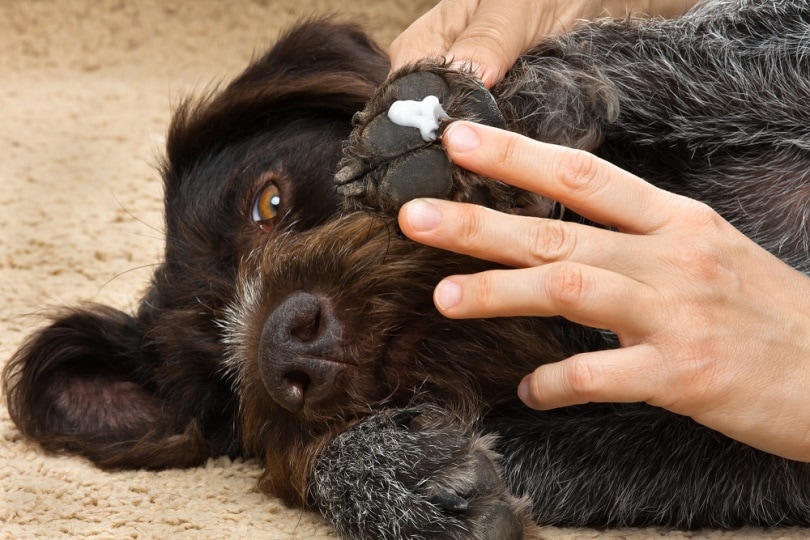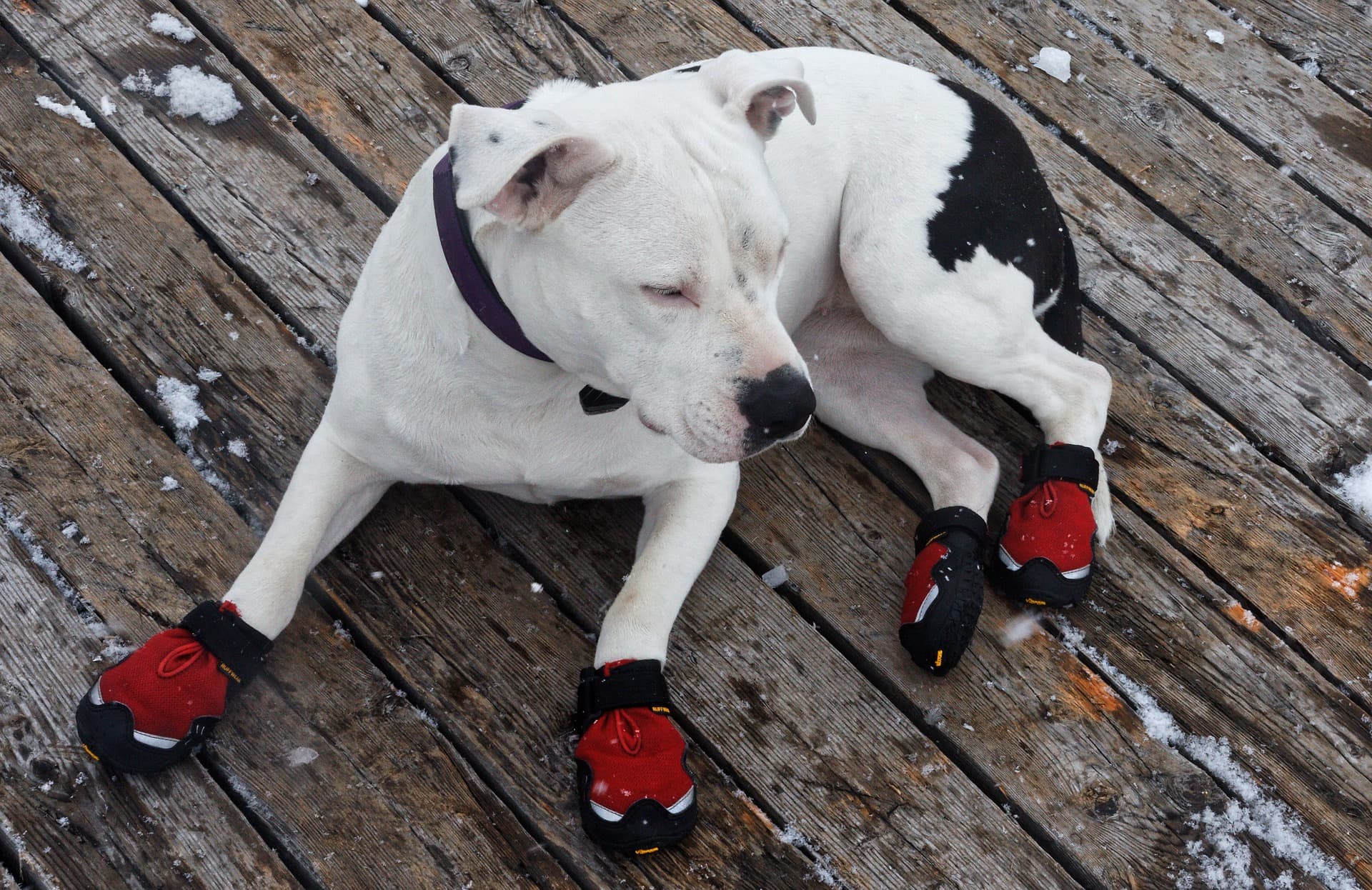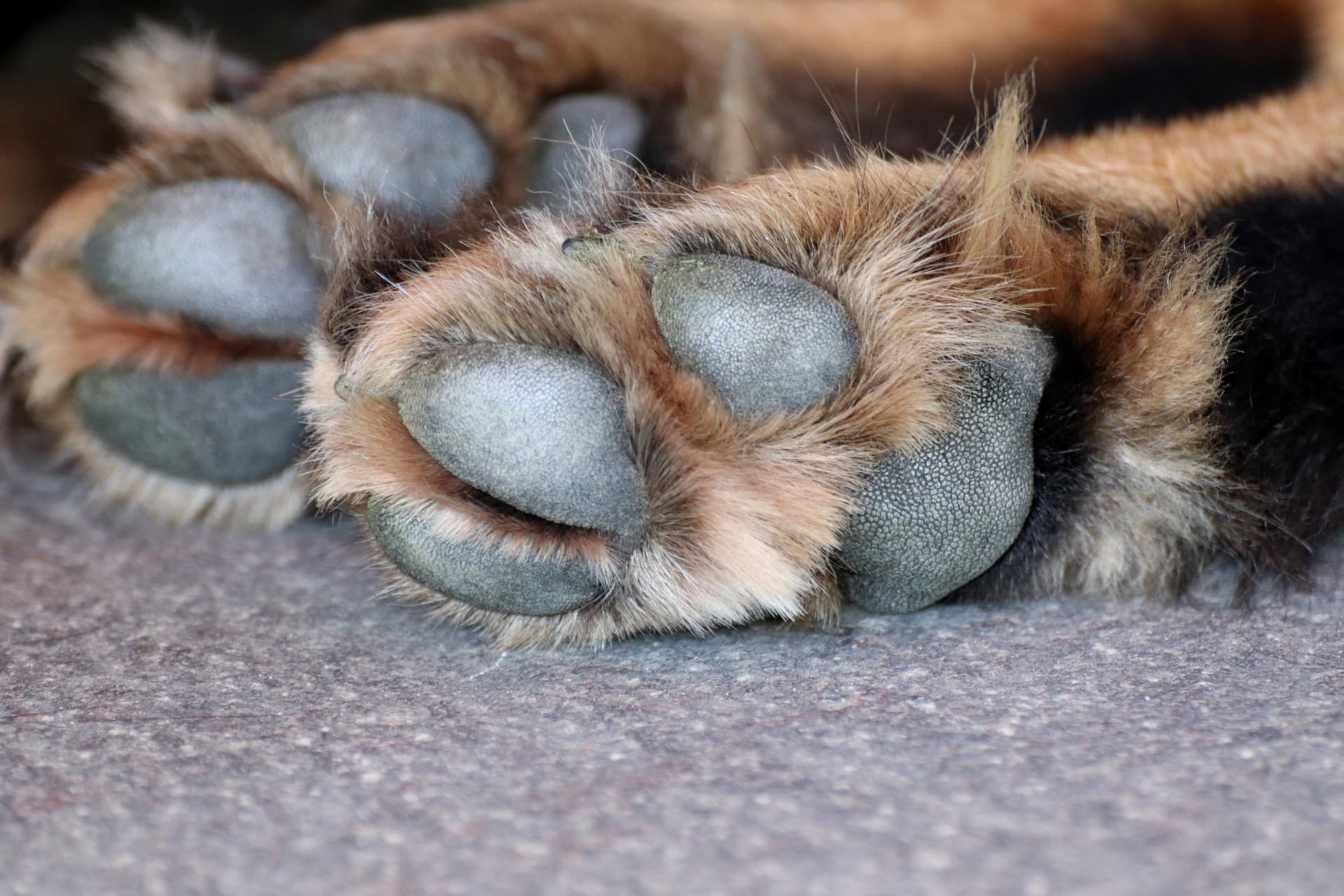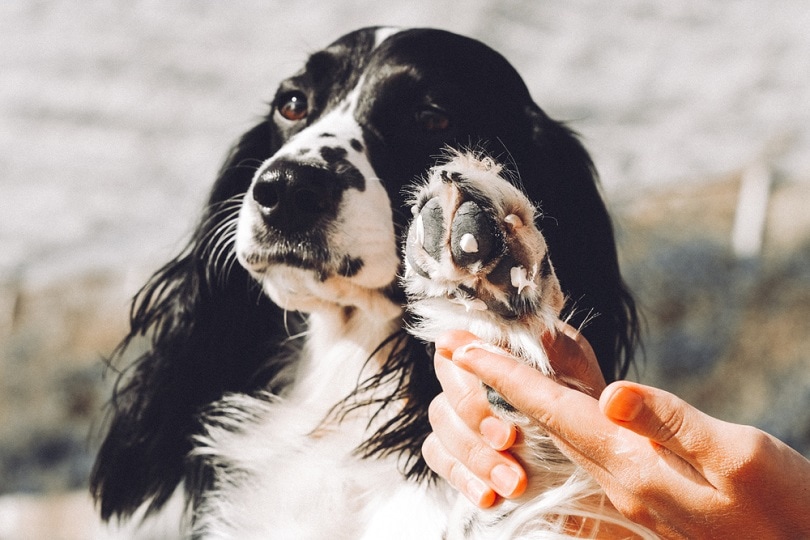The summer months can be a real doozy for everyone—and you probably already try to keep your dog out of scorching temperatures. But with shoes on your feet, you might not notice just how much the sidewalk outside feels like hot coals—but your dog does.
Sure, your dog’s paw pads are marvelous things, able to protect your pup from the elements. But even their paw pads are no match for heat that is too extreme. If you place your hand on the pavement and feel that it is uncomfortably hot to the touch, then you know your dog will feel it, too.
Let us learn 10 ways to protect your dog’s tootsies when you could fry an egg on the pavement.
The 10 Tips for Protecting Your Dog’s Paws From Hot Pavement
1. Paw Protection Wax
Some companies make a paw protection wax specifically designed to help protect the paws from extreme temperatures. This coating layer fits over the base of the foot to protect it from all sorts of weather and terrain.
This wax can come in handy in more seasons than the blazing summer. You can utilize its protection power in the winter months, too. You can even put this on before any hikes in, particularly briary or rocky environments.
This type of product is a fabulous alternative for dogs who don’t take kindly to wearing shoes (which includes most canines).

2. Dog Leggings
Do you want a product that looks pretty snazzy but is also practical? Companies make leggings to fit around your pup’s paws that keep them safe from the scorching blacktop.
You can look online for options or even check out DIY options—make your own! Some items like this can fit awkwardly or distract your dog on the go. Like any other clothing item, this won’t work for all dogs. But if your dog doesn’t have trouble sporting accessories or clothing, you can give this a whirl.
3. Dog Booties
Booties can come in handy, so they might be a very wise investment. Not only can your dog slip on their favorite pair of shoes in the heat of the summer, but they can also wear these booties in the winter to protect from harsh winters.
Not all dogs will like to wear shoes—and that is just a cold, hard fact. So, even though it is a really good barrier to put between your dog’s paws and the pavement, it won’t always work for every canine.
Also, the fit is incredibly important—some booties slip and slide, which can actually irritate the paws themselves. If you choose to buy a pair, make sure you accurately measure to get the perfect fit.

4. Use Doggy Gear
If your dog doesn’t need the exercise, but still wants to come on an adventure—you can always use doggy-friendly gear for fun. Or, you can use these items as a means to transport your dog from hot pavements to a nice, grassy surface where they will be paw pad pain-free.
Manufacturers make doggy backpacks specifically to tote around your furry pal. You can get all sorts of different designs, so buy the one that works best for your dog. Plus, this gives you an extra storage space to stash their food, water, and poop bags.
Of course, if you have a large breed, it would be hard to hurl them up on your back. But this option works well for toy to medium-sized breeds.
If temperatures are extreme, remember to get a backpack with proper ventilation to avoid overheating.
5. Stay on Grass
If you have to take your dog outside in the midday sun, try to avoid pavement altogether. Stay on the grass when you can to eliminate exposure and reduce paw pad damage.
Grass doesn’t retain heat like cement or pavement. If there is a way to keep your dog on the lawn rather than on a hot surface, it’s for the best.
6. Toughen Paws
Try to encourage your dog to walk on all kinds of rough surfaces. The more their paw pads get used to different terrain and temperatures, the more their feet adjust to take on the elements.
That doesn’t mean exposing them to a world of hurting surfaces. It simply means to let your dog regularly walk on rough parts of the land to make sure their paw pads do their job.
If you try to toughen the pads, always check after every outing to ensure no irritation or damage is happening without you realizing it.

7. Moisturize Paws
Maybe you don’t think about moisturizing your dog’s rough paw pads, but it won’t hurt a bit. A lot of breakage in the skin can happen when the paw pads dry out again and again. After a while, the paw pads can split open.
If you continually treat the paw pads with moisturizing creams, it will improve elasticity in the skin.
8. Walk at Cooler Times
Even though it’s inevitable sometimes to let your dog out in the heat, try to schedule potty time and walks in the early morning or late evening.
These times will allow the pavement to cool off. You can even test the pavement with your own feet or another sensitive part of your skin to ensure it isn’t too hot to walk on.
9. Monitor Paws
Every day, once you’re winding down, inspect your guy or gal’s paw pads to check for damage. You might notice dryness, cracks, or redness on the paw pads.
If you see any part of the paw that seems like it may be irritated, take additional measures to protect them until it heals up.

10. Use Alternate Exercise Methods
Instead of taking a nice brisk walk, think about alternative activities that burn calories and keep your pup in shape. You can take them to the yard for some games of fetch or drive down to the local dog park for some playtime.
As long as your dog gets the amount of exercise required for the breed in question, you won’t need to worry about making them walk on hot surfaces.
 Final Thoughts
Final Thoughts
Even though your dog’s paws are meant to take the brunt of heat, cold, and uncomfortable terrain, they can still get hurt in extreme cases. Summer sun can be incredibly strong, and pavement, cement, and metal surfaces soak it up.
During the hot months, use one or a combination of these tips and tricks to prevent paw damage and keep your dog physically in shape. It’s easier to prevent heat damage than to treat it once it becomes a problem.
You May Also Like:
- How to Care for Your Dogs Paw Pads: 8 Easy Ways
- Should Dogs Wear Dog Boots While Hiking? Why or Why Not?
Featured Image Credit: Te9I, Shutterstock











